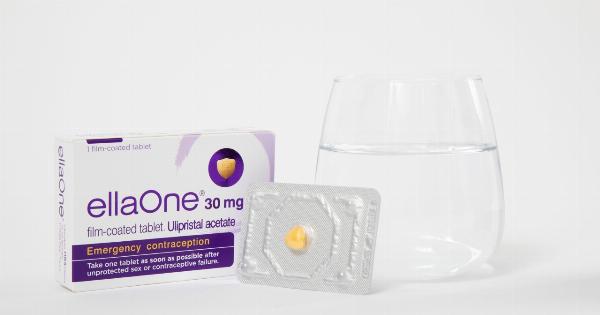Using a condom during sexual intercourse is one of the easiest and most effective ways to protect yourself against sexually transmitted infections (STIs) and unwanted pregnancy.
However, what happens when the condom breaks during sex? This is a common concern for many couples, and it’s important to know what to do in such a situation. Here are some steps to take if a condom breaks during sex:.
1. Stop immediately
The first step is to stop sexual activity immediately. It’s important to remember that if the condom broke, it’s no longer providing protection against STIs or pregnancy. Continuing with sex could result in infection or pregnancy.
2. Check for missing pieces
The next step is to check for any missing pieces of the condom. If a piece of the condom is missing, it could be still inside the vagina or rectum. It’s important to remove any missing pieces to prevent infection or other complications.
If you are unable to remove the missing piece, then it’s advisable to seek medical attention.
3. Get tested for STIs
If the condom broke during sex, there is a risk of contracting STIs, and it’s important to get tested as soon as possible. You can get tested at your local sexual health clinic or your doctor’s office.
It’s advisable to get tested for STIs within two weeks of the exposure, as some STIs take time to show up in tests.
4. Consider emergency contraception
If you are not using any other form of contraception and the condom broke during sex, then there is a risk of pregnancy. In such a situation, it’s important to consider emergency contraception.
Emergency contraception can prevent pregnancy if taken within 72 hours of the exposure. You can get emergency contraception from your doctor, local sexual health clinic, or pharmacy.
5. Get a new condom
After the condom has broken, it’s important to get a new condom for continued protection against STIs and pregnancy. It’s advisable to use a new condom for each sexual encounter to prevent the risk of STIs and pregnancy.
6. Prevent future condom breaks
There are several things you can do to prevent condom breaks in the future. Firstly, ensure that you are using the right size of condom. If the condom is too tight or too loose, it could break during sex. Secondly, ensure that you store the condom properly.
Using expired or improperly stored condoms could lead to breakage. Lastly, make sure that you are applying the condom correctly. Improper application could lead to condom breaks.
7. Consider alternative contraception methods
If you find that condom breakage is a recurring problem, then it’s advisable to consider alternative contraception methods.
There are several options available, including birth control pills, intrauterine devices (IUDs), and contraceptive injections. It’s advisable to speak to your doctor or a healthcare professional to discuss the best option for you.
Conclusion
Breaking a condom during sex can be a cause for concern, but it’s important to remember that there are steps you can take to protect yourself against STIs and pregnancy.
These steps include stopping immediately, checking for missing pieces of the condom, getting tested for STIs, considering emergency contraception, getting a new condom for continued protection, preventing future condom breaks, and considering alternative contraception methods. Remember that it’s always better to be safe than sorry, and it’s important to take steps to protect yourself and your partner against the risk of STIs and unwanted pregnancy.




























